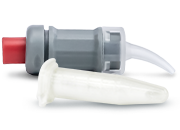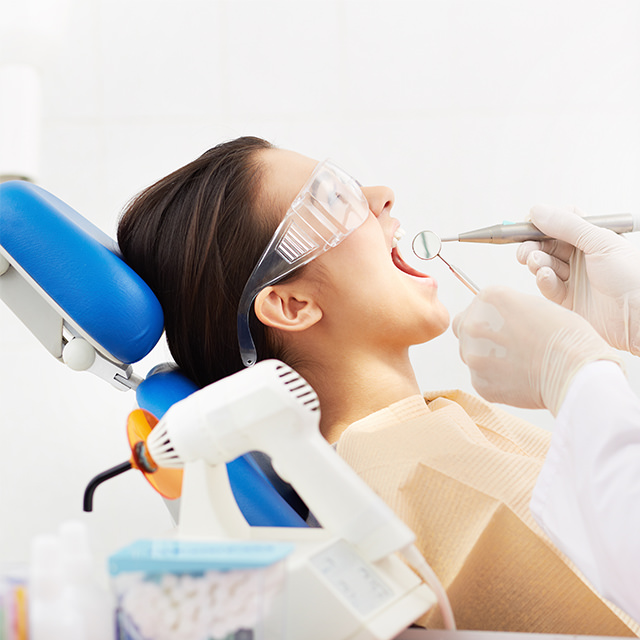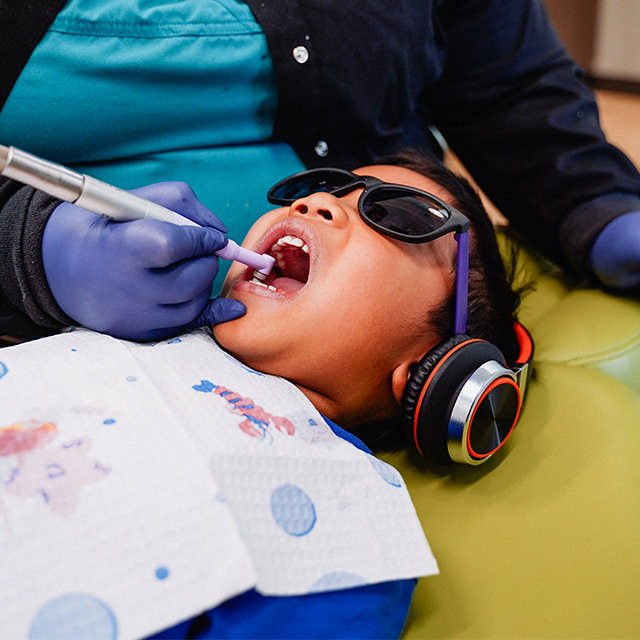
Many dentists are closing their office or limiting dental care due to American Dental Association recommendation that dentists stop providing elective care. This is due to the safety of the general public around concerns of the spread of COVID-19, also commonly referred to as the coronavirus. This undoubtedly will have an impact on the oral health of children as routine preventive care will be delayed. There are many ways teledentistry can be used by pediatric dentists to improve access to care.
Listen to the full podcast now: Teledentistry for Pediatric Dentists
Triage Patients
During the time where dentists are limiting care to emergencies, teledentistry for pediatric dentists can help providers triage patients. This can be useful to see if a patient is a true emergency, or if treatment can wait. An example would be discomfort from a canker sore, or erupting tooth versus decay that is causing pain or infection. Both are common concerns from parents and managed differently. Triaging patients by electronic means can limit the potential for exposure of the coronavirus to your office, patients, and staff.
Forms of Teledentsitry for Pediatric Dentists
There are a few ways that dentists can communicate electronically with their patients. The method will determine if the communication is synchronous (real-time communication) or asynchronous (information that is stored for a dentist to view later). This will impact the way the insurance and patient are billed. One may also want to consider being able to access patient management software to review the patient’s chart and radiographs. This can be done via a virtual private network or a remote login application. It is recommended that one consults with their IT provider to setup remote access. It is recommended to sign a Business Associate Agreement with any of your third-party vendors.
- Secure Email
- Messaging (Text or Online Chat)
- VOIP Phone
- Cell Phone
- Video
- Some Third-Party Applications
- Teledent by Mouthwatch – $149/mo (free 30-day trial)
- Denteractive – $149/mo
- Dentulu – Free during Beta Testing
- YourVirtualConsult – $299/mo (free two-month trial)
HIPAA and Teledentistry for Pediatric Dentists
In order to improve access to care at this time the HHS Office for Civil Rights will waive potential HIPAA penalties for good faith use of telehealth during the COVID-19 emergency. The best practice is to always protect PHI when communicating with patients. Here are some tips for devices that have access to PHI at home.
- Enable passcodes on devices
- Enable ‘auto-lock’ on devices
- Secure e-mails that are sent electronically
- Use encryption when accessing practice management software remotely (VPN or Third-Party Application)
- Install the same antivirus and malware software the office uses
- Consider allowing IT to monitor your home device
- Limit the device to only necessary uses (ie children could compromise device security with a click)
Documentation
Documenting the encounter should be done just as if the patient was seen at the office. A teledentistry note should include a review of the patient’s medical and dental history, their chief complaint, subjective and objective findings, the dentist’s assessment, and a treatment plan. A SOAP note can be useful for providers to use. Should the provider have limited access to the practice management software pen and paper can be utilized to write the note as well as sign and date it to be scanned into the patient’s chart at a later date.
It is also recommended providers check with their State Dental Board regarding regulations pertaining to teledentistry.
- Providing the treating dentist’s name, license number and dental board contact information.
- Review of a patient’s most recent radiographs prior to beginning orthodontic treatment.
- A patient examination, including completion of a medical and dental history, diagnosis and treatment plan.
- Recourse for the patient to report to the dental board incidents of treatment that fall below the standard of care, even if the patient has signed an arbitration clause or nondisclosure agreement.
What are the teledentistry billing codes?
- D9995 – teledentistry – synchronous; real-time encounter (Reported in addition to other procedures (e.g., diagnostic) delivered to the patient on the date of service.)
- D9996 – teledentistry – asynchronous; information stored and forwarded to the dentist for subsequent review (Reported in addition to other procedures (e.g., diagnostic) delivered to the patient on the date of service.)
- Place of Service Code – 02 (This needs to be placed on the ADA claim form in Box 38)
- Treating Dentist and Treatment Location – Box 56 (Must be updated to the location where the patient being treated is physically located, and it must be a street address)
- Read the full guide.
Tom Terronez
Tom Terronez is the CEO of Medix Dental, which was founded in 2003. Medix Dental provides dental practices with IT support and consultation in practice technology decisions.





